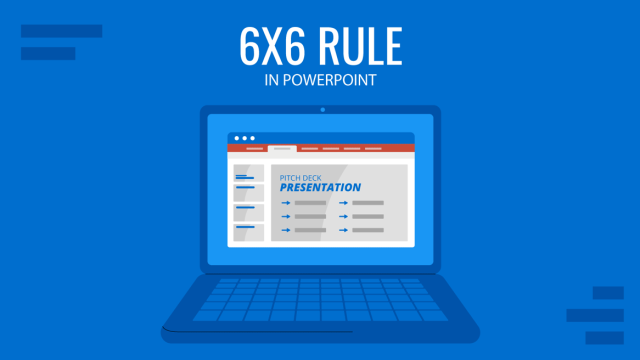
Slide dimensions can play an important role when displaying information on large screens or according to the type of content on the slide. A large screen would require a widescreen orientation, and you might even need to customize it to fit the screen size. Similarly, some infographics and illustrations require making necessary adjustments to slide orientation to display the content during the presentation correctly. Like PowerPoint, you can also change slide dimensions in Google Slides.
How to Change Slide Size in Google Slides
Google Slides allow setting different slide dimensions according to user needs, including a Standard, Widescreen, or Custom size. To change Google Slide dimensions, go to File > Page Setup.

You can adjust the Google Slides page size from the pop-up menu displayed via Page Setup. The available options include switching to Standard 4:3, Widescreen 16:9, Widescreen 16:10, and a custom slide size. Select the desired slide size and click Apply.
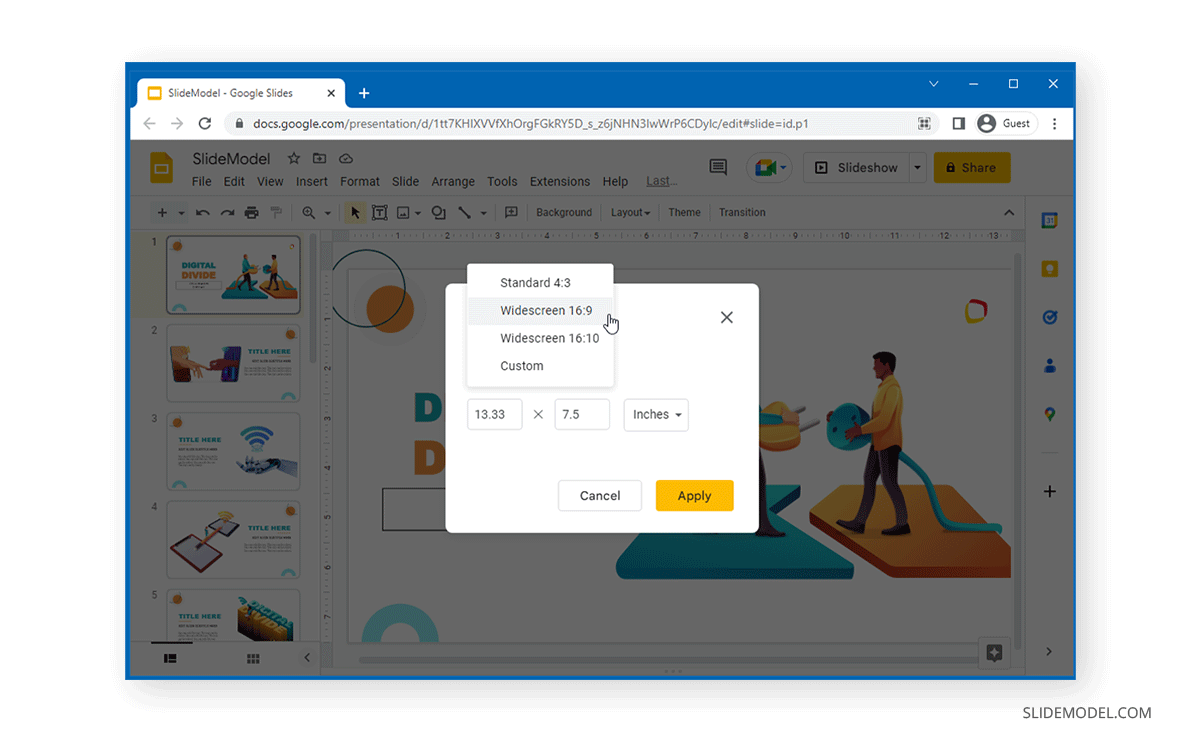
What Size is Google Slides?
If you’re wondering what Google Slides size is right for you, pick a Google Slides resolution that best goes with your screen type. If it’s an old monitor or small screen, you might want to use a Standard orientation, whereas modern monitors or projectors often suit the Widescreen orientation.
Standard Orientation (4:3)
The Standard 4:3 slide orientation displays content in a smaller size compared to widescreen orientations. This orientation was commonly used in legacy versions of PowerPoint and Google Slides, as projectors and screen monitors did not offer the utility to project a widescreen slide correctly. However, this orientation is still used for smaller slides and screens. Where the slide content might be smaller and better suited to a Standard slide size. This might include pictures, illustrations, tables, and other types of slide content that might appear too stretched on a widescreen slide orientation.
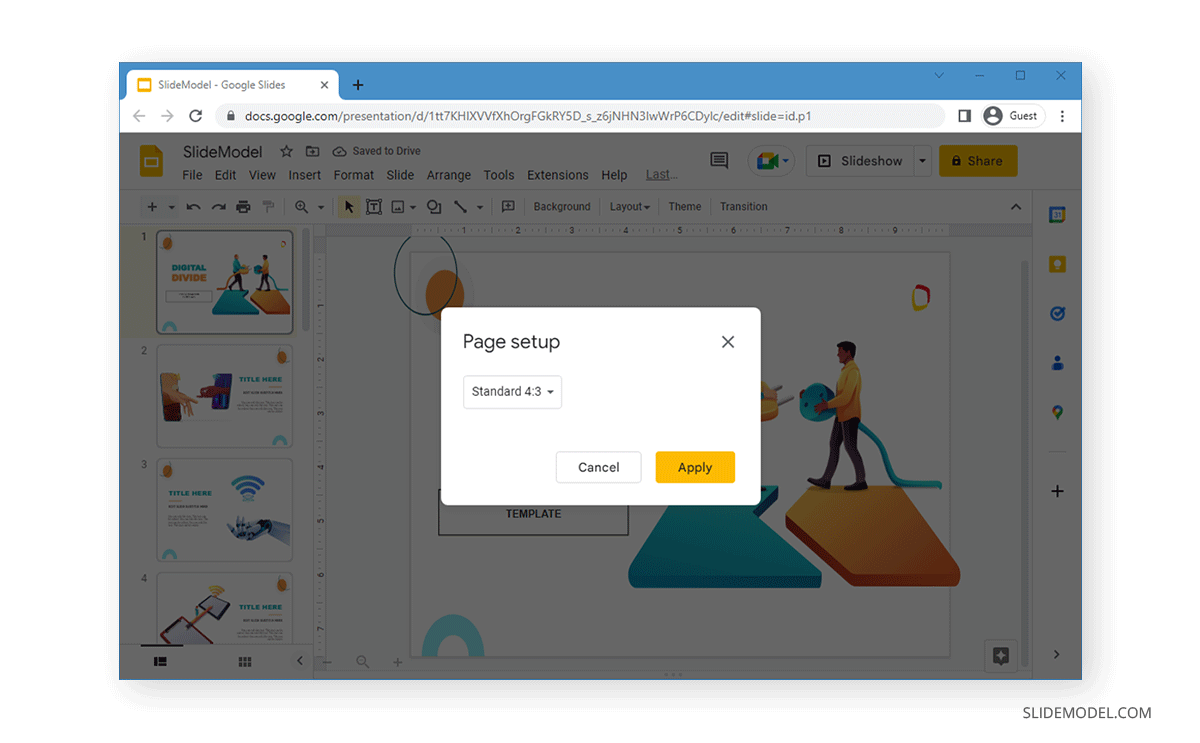
Widescreen (16:9)
The 16:9 widescreen resolution is quite commonly used, and might even be considered the standard size for modern presentations. This is because 16:9 was the replacement for the 4:3 aspect ratio post-2008, as screen sizes and display standards evolved for monitors, projectors, and television channels globally.

Widescreen (16:10)
While 16:10 is not as widely used as 16:9; it is commonly used in tablets and computer monitors. The ratio is closer to the Golden Ratio of 1.618, but the higher manufacturing cost of devices has meant that manufacturers mainly stick to 16:9 for electronic devices.
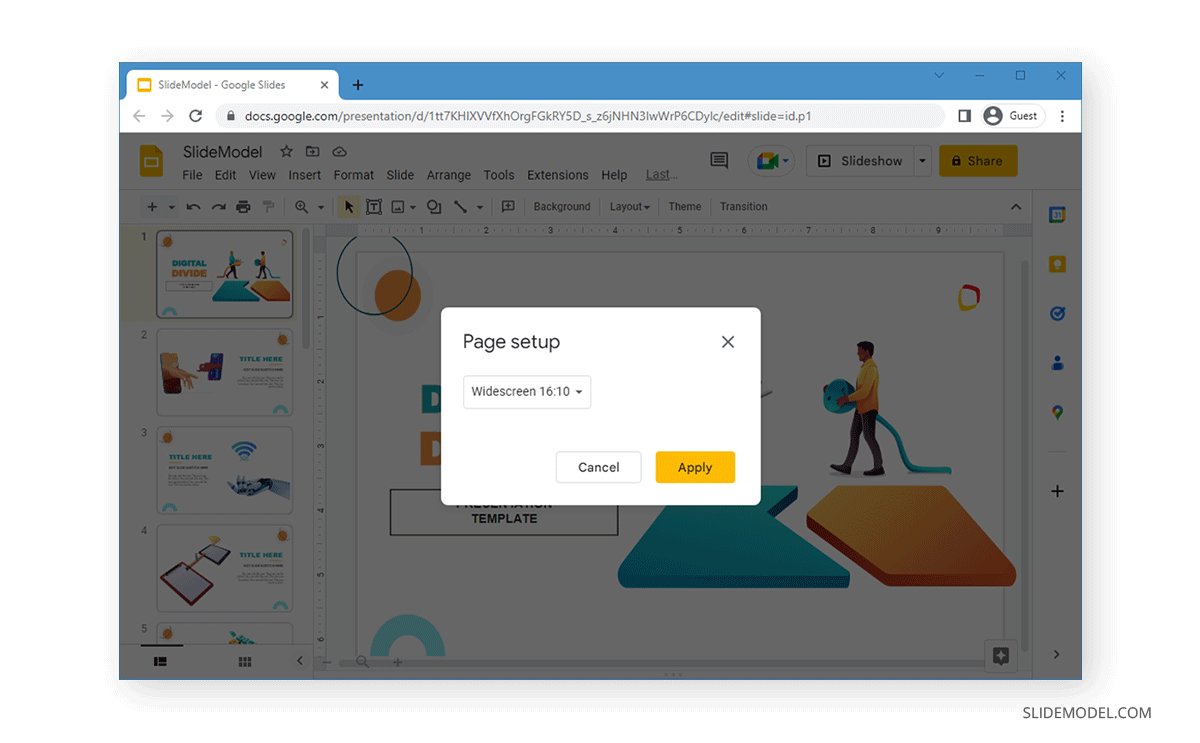
Custom Orientation
Google Slides also provides a Custom orientation option, where you can also choose to pick the slide size in inches, centimeters, points, or pixels. This option can be useful if you intend to edit the slide orientation according to a specific document, picture, infographic, etc. For example, you can switch to 8.5 x 11 inches for Letter orientation or 8.27 inches for A4 size. Similarly, you can make changes in pixels, points, or centimeters.
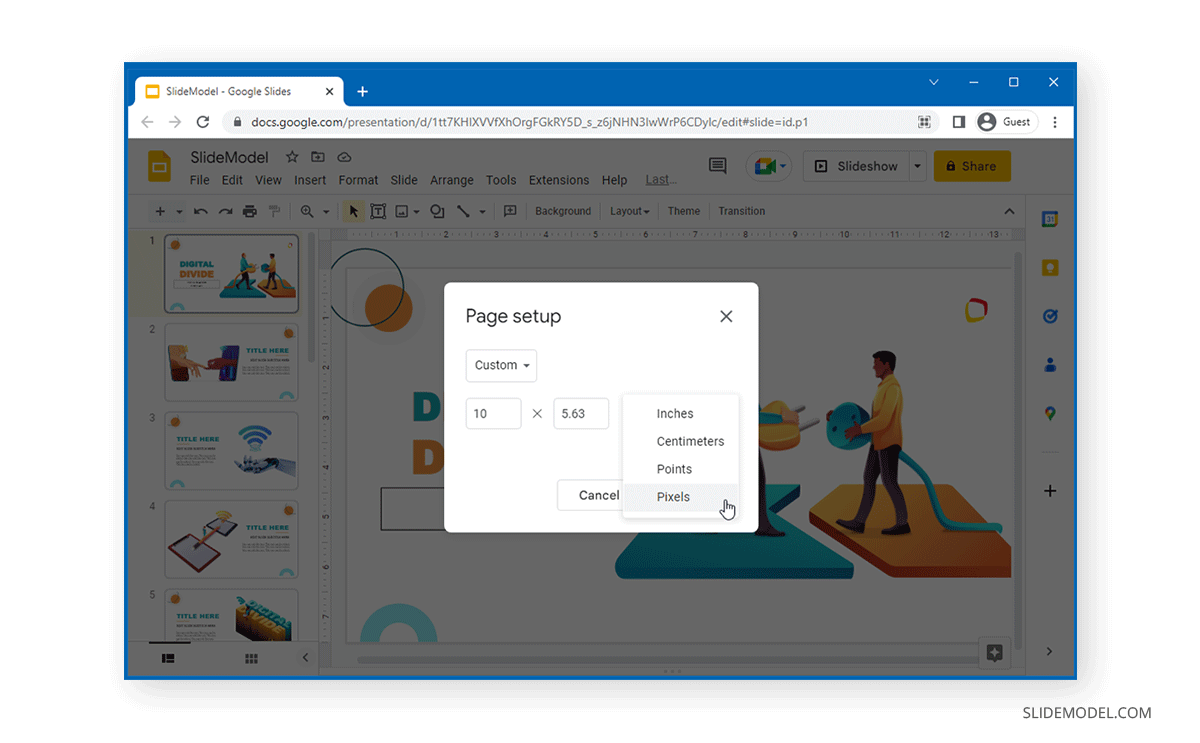
When considering how to edit slide size on Google Slides according to your display monitor or presentation requirements, you might want to run a mock presentation with a colleague. If it’s a remote meeting, the slide size would automatically adjust due to the responsive UIs of various devices. However, one orientation or another might appear more convenient for your audience based on your presentation needs. For example, suppose your remote meeting participants are mainly using mobile devices. In that case, you might want to test out a lower resolution, compared to when you are presenting before an audience using a widescreen monitor.
